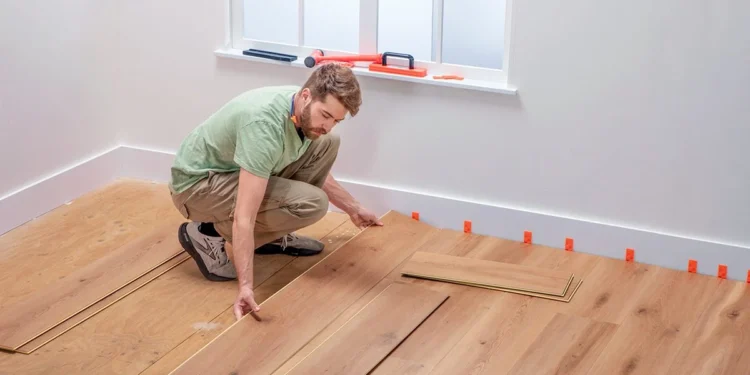Flooring is one of the most influential design choices in any property. It sets the tone for the interior, impacts daily comfort, and plays a key role in both functionality and style. Whether you are renovating a period property, designing a modern home, or updating a commercial space, understanding the different flooring options available is essential. With the right choice, flooring becomes more than just a surface to walk on; it becomes an integral part of the living experience.
The Importance of Flooring in Interior Design
The floor is the largest continuous surface in a room, making it one of the first things people notice. Its texture, colour, and finish can influence how big or small a space feels. Smooth reflective floors such as polished stone make a room look brighter and more spacious, while natural wood offers warmth and a homely feel. Flooring also affects acoustics, insulation, and even indoor air quality, making the decision more than just an aesthetic one.
Popular Flooring Options
Hardwood Flooring
Hardwood flooring remains one of the most desirable options due to its natural beauty, durability, and ability to be refinished multiple times. Oak, walnut, and ash are common choices in the UK, offering timeless appeal.
Pros: Long-lasting, adds property value, wide variety of finishes
Cons: Costly, requires maintenance, can be prone to scratches
Engineered Wood
Engineered wood is designed to mimic solid hardwood but with more stability. It consists of a real wood top layer bonded to multiple layers of plywood, preventing warping.
Pros: More affordable than solid hardwood, suitable for underfloor heating, stable in humid conditions
Cons: Limited refinishing potential compared to solid wood
Laminate Flooring
Laminate flooring is an affordable and practical choice, particularly for busy households. Modern laminates can replicate wood, stone, or tile at a fraction of the price.
Pros: Budget-friendly, easy to install, scratch-resistant
Cons: Cannot be refinished, may look artificial if low quality
Vinyl Flooring
Vinyl is one of the most versatile options, available in sheets, tiles, or luxury vinyl planks (LVT). It offers excellent resistance to moisture, making it ideal for kitchens and bathrooms.
Pros: Waterproof, low maintenance, wide design options
Cons: Lower-end products may wear quickly, not as long-lasting as wood or stone
Tile Flooring
Tiles, whether ceramic or porcelain, are a classic choice for kitchens, bathrooms, and hallways. They are durable, water-resistant, and available in a huge variety of patterns.
Pros: Hard-wearing, easy to clean, suitable for underfloor heating
Cons: Cold underfoot, can be slippery, grout requires maintenance
Carpet
Carpet remains popular for bedrooms and living rooms where comfort is prioritised. It provides warmth, reduces noise, and offers a cosy feel.
Pros: Soft, insulating, available in many colours and patterns
Cons: Can stain easily, not suitable for damp areas, requires regular cleaning
Natural Stone
Marble, limestone, and slate floors bring a luxury feel to any home. Stone is highly durable and each piece has unique character.
Pros: Long-lasting, elegant, unique natural appearance
Cons: Expensive, requires sealing, cold underfoot without heating
Key Factors to Consider When Choosing Flooring
Room Function
Different rooms demand different flooring. For example:
-
Kitchens and bathrooms: Waterproof, easy-to-clean options like vinyl or tile
-
Living rooms and bedrooms: Warm, comfortable options like carpet or wood
-
Hallways: Durable surfaces like stone or laminate to withstand high traffic
Lifestyle and Household Needs
A family home with children and pets requires durable, scratch-resistant flooring. Laminate and luxury vinyl are good choices. For allergy sufferers, wood and tile are preferable as they do not trap dust.
Budget
Flooring costs vary significantly. While hardwood and stone can be expensive, laminate and vinyl provide cost-effective alternatives without sacrificing style.
Maintenance
Some flooring requires sealing, polishing, or refinishing. Others need only basic cleaning. Choosing the right option helps minimise upkeep.
Sustainability
Eco-conscious homeowners may look for FSC-certified wood, recycled materials, or natural flooring such as bamboo or cork.
Flooring Installation and Professional Help
While many flooring types such as laminate and click-fit engineered wood can be DIY projects, professional installation ensures longevity. Subfloor preparation, moisture barriers, and proper fitting all affect performance. For natural stone and hardwood, professional expertise is highly recommended.
Flooring and Underfloor Heating
Underfloor heating is increasingly common in UK homes. Not all flooring types are compatible, so it is important to check before installation. Engineered wood, tiles, and vinyl work well, while solid hardwood and thick carpet may not.
Trends in Modern Flooring
-
Wide plank wood floors for a spacious, contemporary look
-
Luxury vinyl tiles (LVT) offering realistic textures and waterproof performance
-
Eco-friendly materials like bamboo and reclaimed wood
-
Patterned tiles bringing personality into kitchens and bathrooms
-
Neutral tones that create calming spaces and pair well with modern interiors
Long-Term Value of Quality Flooring
Investing in high-quality flooring increases property value, improves comfort, and reduces the need for frequent replacements. While cheaper options may save initially, they often wear faster, leading to additional costs over time.
FAQs About Flooring
What is the most durable flooring for high traffic areas?
Porcelain tile and luxury vinyl are excellent for hallways and kitchens due to their toughness and scratch resistance.
Can flooring increase property value?
Yes, hardwood flooring in particular is highly desirable and often increases resale value.
What flooring works best with underfloor heating?
Engineered wood, stone, and tile are most suitable, as they conduct and retain heat efficiently.
How do I choose between carpet and hard flooring?
Consider the room’s purpose. Carpet is best for comfort and warmth in bedrooms and living areas, while hard floors are practical in kitchens and bathrooms.
Are natural flooring options sustainable?
Yes, materials like bamboo, cork, and responsibly sourced wood are eco-friendly choices.
What is the best flooring for homes with pets?
Scratch-resistant laminate, vinyl, and tiles are practical, as they are easy to clean and withstand wear.






